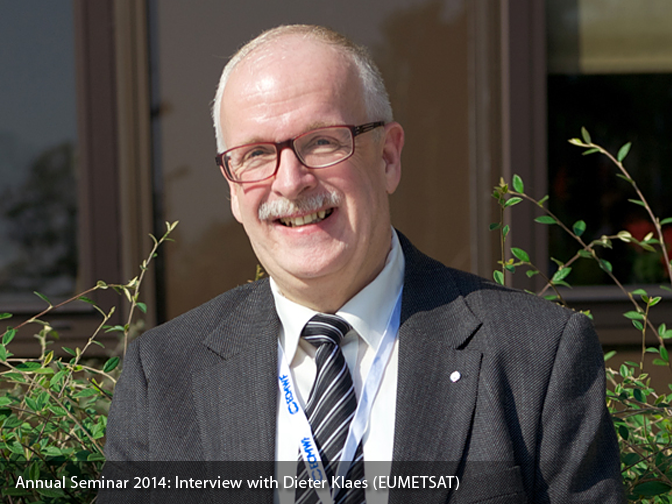

Dieter Klaes leads the Atmospheric Profiling Competence team within the Remote Sensing and Products Division of EUMETSAT. At the seminar, he gave a presentation on techniques and processes for pre-launch characterization of new instruments.
How does EUMETSAT benefit from its cooperation with ECMWF?
ECMWF and EUMETSAT are both members of the European Meteorological Infrastructure (EMI). Maximum benefit is obtained from their overall contribution in observation and modelling capabilities. ECMWF is one of the core users of EUMETSAT satellite data. To name a few aspects:
- ECMWF provides EUMETSAT with the information on the impact of the satellite observations on model forecast quality, in terms of impact on the forecast error reduction of instruments embarked on EUMETSAT satellites and assimilated into the ECMWF model.
- ECMWF supports EUMETSAT in the preparation of new missions, through observation simulation experiments, simulation of new instruments data and their probable impact on the forecast quality.
- ECMWF is a key participant in the User Consultation Processes for new satellite systems, and contributes to shaping new missions, as participants in Expert and Science Advisory Groups.
- ECMWF is an observer in EUMETSAT delegate bodies and vice versa.
Through the early access and use of EUMETSAT products during satellite commissioning, important early feedback on the product quality is obtained.
How does EUMETSAT contribute to climate services?
EUMETSAT contributes with its satellite systems to monitoring changes in the climate system (e.g. rising temperatures, melting ice and increasing sea level). The EUMETSAT Satellite Application Facilities (SAF) are delivering products (Essential Climate Variables) for climate change monitoring. Also EUMETSAT is part of the GSICS (Global Satellite Inter Calibration System) and SCOPE-CM (Sustained and Coordinated Processing of Environmental Satellite Data for Climate Monitoring).
With the Climate Service Development Plan (CSDP), a rolling 4–5 year plan, EUMETSAT documents its commitment towards climate services. This plan benefits from product developments but also adds needed developments for climate. It comprises generating individual Climate Data Records (FCDR and TCDR), engineering and coordinating activities. Other activities comprise commitments to EU projects such as ERA-CLIM2, joint activities with the SAF network, NOAA and other international partners (e.g. for SCOPE-CM). EUMETSAT maintains an archive dating back to 1981, the EUMETSAT Data Centre, where all mission data and products are stored; to date over 1 Petabyte are stored.
What is the role of EUMETSAT's Satellite Application Facilities?
Data processing, product generation and dissemination are done centrally in Darmstadt at EUMETSAT HQ, but also decentralised by a network of Satellite Application Facilities (SAF) – centres of excellence in certain fields of meteorology and applications. Typical products include detailed ocean and land surface parameters and information on atmospheric composition, but also software packages to process EUMETSAT data. There are currently eight SAFs distributed over Europe. They started the Continuous Development and Operations Phase (CDOP-2) for EUMETSAT’s SAF network in March 2012; ECMWF is participating in some of them.
